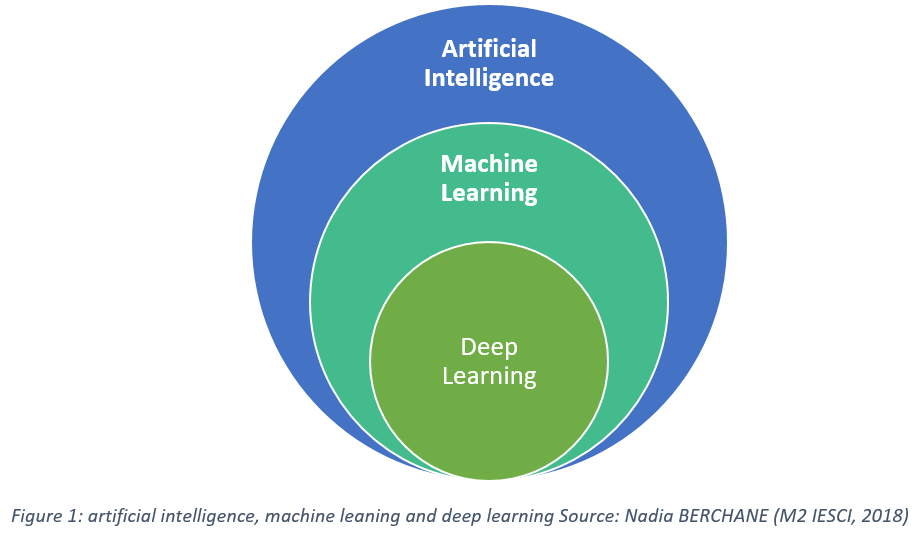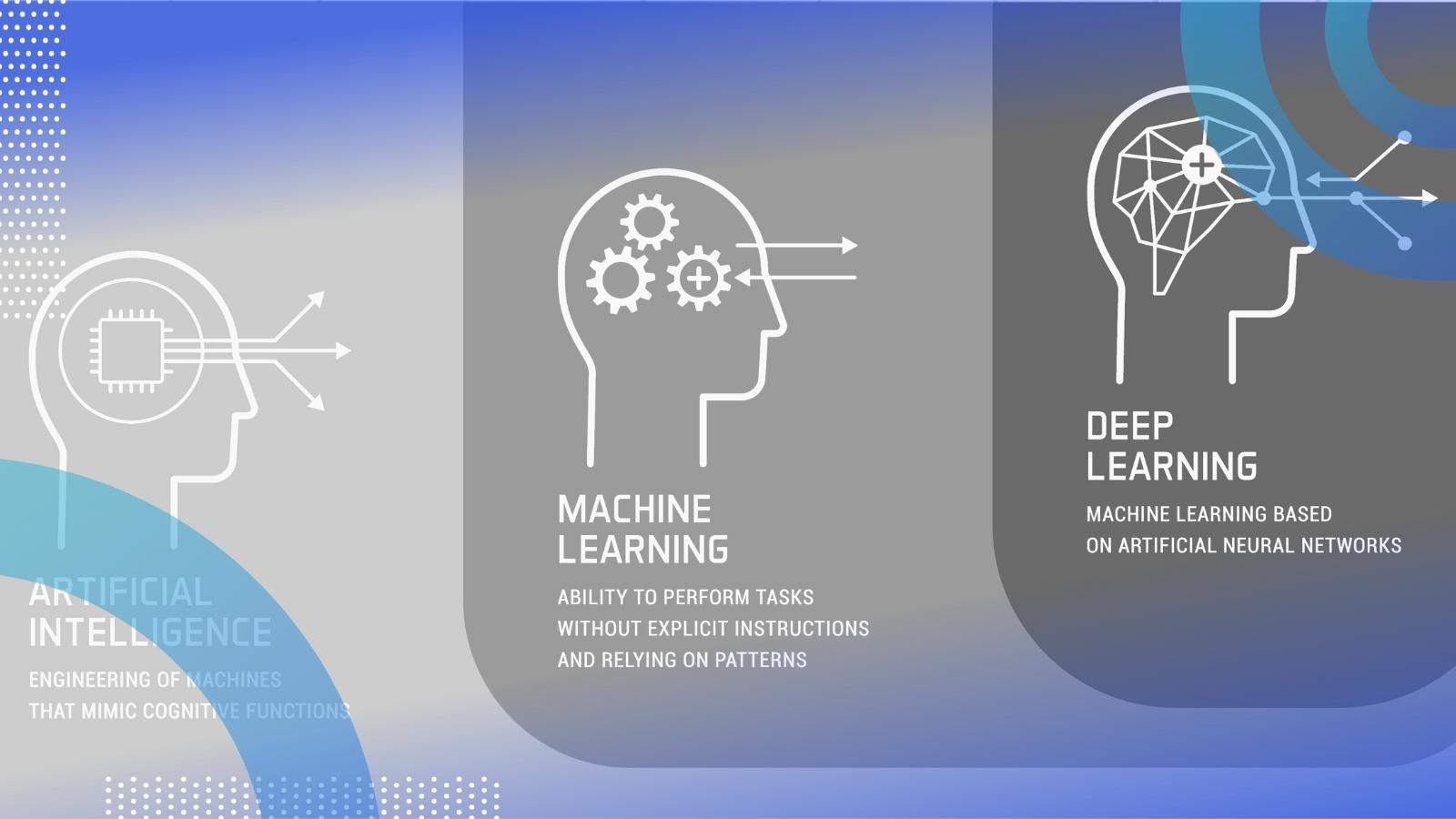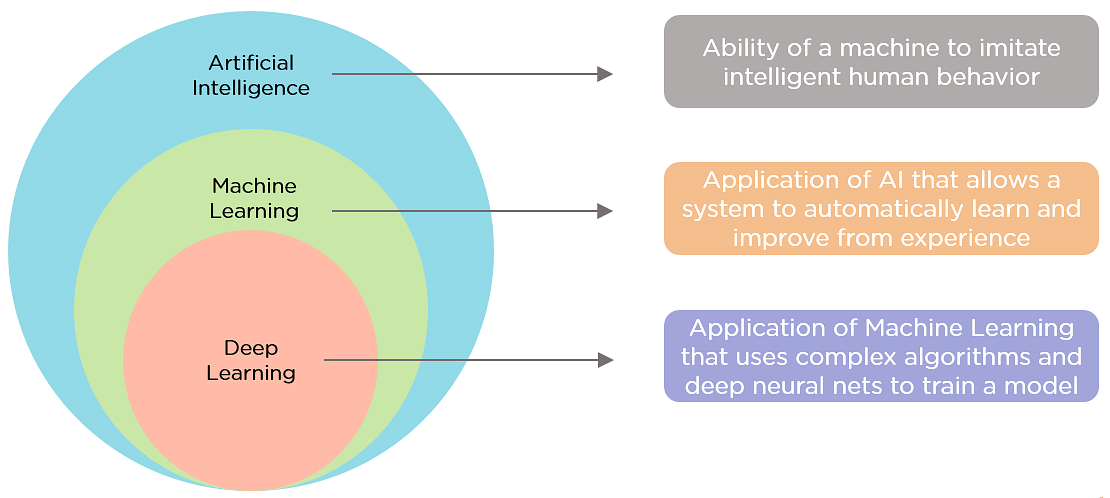**Answer:** Machine Learning (ML) is a subset of Artificial Intelligence (AI) that enables systems to learn from data. Deep Learning (DL) is a specialized form of ML that uses neural networks for complex tasks.
**** Artificial Intelligence, Machine Learning, and Deep Learning are interconnected fields revolutionizing technology today. AI encompasses a broad range of techniques aimed at mimicking human intelligence. Machine Learning, a key component of AI, focuses on developing algorithms that allow computers to learn from and make predictions based on data.
Deep Learning, a more advanced subset of Machine Learning, employs neural networks to tackle intricate problems, such as image and speech recognition. These technologies are reshaping industries, enhancing user experiences, and driving innovation. Understanding the distinctions and applications of AI, ML, and DL is crucial for anyone interested in the future of technology and its impact on everyday life.

Machine Learning Basics
Machine Learning (ML), Deep Learning (DL), and Artificial Intelligence (AI) are exciting fields that change how we use technology. Machine Learning Basics helps us understand how machines learn from data. It allows computers to improve their performance over time without being directly programmed. In this section, we will cover key concepts and different types of algorithms in Machine Learning.
Key Concepts
Understanding the key concepts of Machine Learning is vital for grasping how it works. Here are some important terms:
- Data: Raw information that machines use to learn.
- Model: A mathematical representation that predicts outcomes.
- Training: The process of teaching a model using data.
- Testing: Evaluating how well the model performs on new data.
- Features: Individual measurable properties used by the model.
These concepts form the foundation of Machine Learning. They help us to understand how machines make decisions based on data.
Here’s a simple table summarizing these concepts:
| Term | Description |
|---|---|
| Data | Information used for learning. |
| Model | Predictive representation. |
| Training | Teaching the model with data. |
| Testing | Checking model performance. |
| Features | Properties that influence outcomes. |
Types Of Algorithms
Machine Learning uses different types of algorithms to solve problems. Each algorithm has its own way of learning from data. Here are the main types:
- Supervised Learning: The model learns from labeled data. It predicts outcomes based on input.
- Unsupervised Learning: The model finds patterns in data without labels. It organizes data into groups.
- Reinforcement Learning: The model learns by trial and error. It receives rewards or penalties based on its actions.
Here’s a quick overview of these algorithms in a table:
| Algorithm Type | Description |
|---|---|
| Supervised Learning | Uses labeled data to predict outcomes. |
| Unsupervised Learning | Finds patterns in unlabeled data. |
| Reinforcement Learning | Learns through rewards and penalties. |
Each type of algorithm serves a different purpose. They help in various applications, from recommendations to image recognition.

Deep Learning Explained
Machine Learning, Deep Learning, and Artificial Intelligence are exciting fields in technology. Deep Learning is a subset of Machine Learning. It mimics how humans learn. This method helps computers understand complex data. It works with large amounts of information to find patterns. Let’s dive into Deep Learning and explore its key components.
Neural Networks
Neural Networks are the backbone of Deep Learning. They are inspired by the human brain. Just like our brain has neurons, neural networks have units called “neurons.” These neurons work together to solve problems. Here’s how they function:
- Input Layer: Receives data.
- Hidden Layers: Process the data.
- Output Layer: Gives the result.
Neural networks can have many hidden layers. This allows them to learn complex features. The more layers, the better they can understand patterns. Here is a simple table showing the types of neural networks:
| Type of Neural Network | Description |
|---|---|
| Feedforward Neural Network | Data moves in one direction, from input to output. |
| Convolutional Neural Network | Best for image processing and recognition. |
| Recurrent Neural Network | Processes sequences, like text and speech. |
Neural networks learn by adjusting weights. This makes their predictions more accurate. They can recognize faces, understand speech, and much more.
Applications
Deep Learning has many real-world applications. It changes how we interact with technology. Here are some popular uses:
- Image Recognition: Identifies objects in photos.
- Natural Language Processing: Helps computers understand human language.
- Self-Driving Cars: Enables cars to navigate without human help.
- Medical Diagnosis: Assists doctors in diagnosing diseases.
Deep Learning also plays a role in entertainment. Streaming services recommend shows based on your viewing habits. Social media platforms use it to filter content. Here’s a simple list of industries benefiting from Deep Learning:
- Healthcare
- Finance
- Retail
- Transportation
Deep Learning is revolutionizing technology. It helps solve complex problems, making our lives easier.
Artificial Intelligence Overview
Artificial Intelligence (AI) is a fascinating field that mimics human thinking. It helps machines learn from data and make decisions. This overview covers the history and current trends in AI. Understanding AI is essential as it influences many parts of our lives.
History
The journey of Artificial Intelligence began in the 1950s. Early pioneers aimed to create machines that could think like humans. Key milestones include:
- 1956: The term “Artificial Intelligence” was coined at a conference in Dartmouth.
- 1966: ELIZA, a program that mimicked conversation, was created.
- 1980s: AI experienced a revival with expert systems that solved specific problems.
- 1997: IBM’s Deep Blue defeated chess champion Garry Kasparov.
- 2010s: Deep learning gained popularity, leading to breakthroughs in image and speech recognition.
Here’s a brief timeline of major events:
| Year | Event |
|---|---|
| 1956 | Dartmouth Conference |
| 1966 | Creation of ELIZA |
| 1980s | Expert Systems Rise |
| 1997 | Deep Blue vs. Kasparov |
| 2010s | Deep Learning Breakthroughs |
AI has evolved significantly over the decades. It transformed from simple programs to complex systems capable of learning from vast amounts of data. Today, AI is everywhere.
Current Trends
AI is rapidly changing the world today. Several trends shape its future:
- Natural Language Processing (NLP): AI understands and generates human language.
- Computer Vision: Machines interpret visual data, enhancing industries like healthcare and security.
- Automation: AI automates repetitive tasks, improving efficiency in various sectors.
- AI Ethics: Discussions about responsible AI use are gaining importance.
Here are some statistics on AI adoption:
| Industry | Adoption Rate (%) |
|---|---|
| Healthcare | 60% |
| Finance | 70% |
| Retail | 50% |
| Manufacturing | 40% |
AI trends show a bright future. Companies invest heavily in AI technologies. This growth will continue to shape how we interact with machines.
Machine Learning Vs. Deep Learning
Machine Learning, Deep Learning, and Artificial Intelligence are all connected. Machine Learning is a way for computers to learn from data. Deep Learning is a special type of Machine Learning that uses many layers to analyze data. They both help computers make smart decisions. Understanding the difference between Machine Learning and Deep Learning is important for choosing the right method for a task.
Differences
Machine Learning and Deep Learning have key differences that set them apart. Here are some main points:
- Definition: Machine Learning uses algorithms to analyze data. Deep Learning uses neural networks with many layers.
- Data Requirements: Machine Learning can work with smaller datasets. Deep Learning needs large amounts of data.
- Complexity: Machine Learning models are simpler. Deep Learning models are complex and require more processing power.
- Feature Extraction: Machine Learning often needs manual feature extraction. Deep Learning automatically finds features in data.
Here’s a quick comparison table:
| Aspect | Machine Learning | Deep Learning |
|---|---|---|
| Data Size | Small to Medium | Large |
| Model Complexity | Low | High |
| Feature Extraction | Manual | Automatic |
| Processing Power | Less | More |
These differences shape how each method is used. Machine Learning is often faster and easier. Deep Learning is powerful but requires more resources.
Use Cases
Both Machine Learning and Deep Learning have many real-world uses. Here are some examples:
- Machine Learning:
- Spam Detection: Filters out unwanted emails.
- Credit Scoring: Assesses loan risks.
- Recommendation Systems: Suggests products to users.
- Deep Learning:
- Image Recognition: Identifies objects in pictures.
- Speech Recognition: Converts voice to text.
- Self-Driving Cars: Makes decisions based on surroundings.
Both methods solve different problems. Machine Learning works well for simpler tasks. Deep Learning shines in complex areas, like visual and auditory data. Choosing the right method depends on the problem at hand.
Real-world Applications
Machine Learning, Deep Learning, and Artificial Intelligence are changing our world. These technologies help us solve problems in many fields. Their real-world applications make life easier, faster, and smarter. Let’s explore how these technologies work in healthcare and finance.
Healthcare
In the healthcare sector, AI and Machine Learning are making a big difference. These technologies help doctors diagnose diseases faster and more accurately. They analyze patient data and find patterns that humans might miss. Here are some key applications:
- Disease Prediction: AI algorithms predict diseases before symptoms appear.
- Medical Imaging: Deep Learning improves image analysis for X-rays and MRIs.
- Personalized Medicine: Treatments are tailored to individual patient needs.
AI can also assist in drug discovery. It speeds up the process of finding new medicines. This can save both time and money. A table below shows some AI tools used in healthcare:
| AI Tool | Application |
|---|---|
| IBM Watson | Helps in cancer diagnosis and treatment plans. |
| Google DeepMind | Improves the accuracy of eye disease detection. |
| PathAI | Enhances pathology diagnosis through image analysis. |
These tools show how AI is changing healthcare. It makes processes faster and more efficient. This leads to better patient outcomes and healthier lives.
Finance
The finance industry is also benefiting from AI and Machine Learning. These technologies help banks and companies manage money better. They can detect fraud, analyze risks, and make smarter investments. Here are some ways AI is used in finance:
- Fraud Detection: AI spots unusual patterns in transactions.
- Algorithmic Trading: Machines execute trades faster than humans.
- Credit Scoring: AI analyzes credit data for accurate assessments.
AI tools can also provide financial advice. Chatbots offer instant customer support. Below is a table of popular AI applications in finance:
| AI Application | Description |
|---|---|
| Chatbots | Provide 24/7 customer service for banks. |
| Risk Management | AI predicts potential financial risks. |
| Personalized Banking | Offers tailored financial services to users. |
These applications show how AI transforms finance. It makes transactions safer and more efficient. Clients enjoy better services and support.
Challenges In Ai
Machine Learning, Deep Learning, and Artificial Intelligence are transforming our world. Yet, these technologies face significant challenges. Understanding these challenges is crucial for safe and ethical AI development. Key issues include ethics and data privacy. Addressing these concerns will help build trust and ensure responsible AI use.
Ethics
Ethics in AI is a pressing concern. Ethical issues arise from how AI systems make decisions. Often, these systems can show bias. Bias can lead to unfair treatment of individuals or groups. Here are some key ethical considerations:
- Transparency: Users should understand how AI systems work.
- Accountability: Developers must take responsibility for AI decisions.
- Fairness: AI should treat all users equally.
- Safety: AI should not cause harm to people or society.
Many believe ethical AI can promote positive outcomes. A clear framework can guide developers. Here’s a simple table of ethical principles:
| Principle | Description |
|---|---|
| Transparency | Make AI processes clear and understandable. |
| Accountability | Ensure developers are responsible for AI actions. |
| Fairness | Aim for equal treatment for all users. |
| Safety | Prevent AI from causing harm. |
By focusing on these principles, we can create ethical AI systems. These systems can benefit everyone without causing harm.
Data Privacy
Data privacy is another major challenge in AI. AI systems often rely on large amounts of data. This data can include personal information. Protecting this information is crucial. Here are some key points about data privacy:
- Consent: Users should agree before their data is collected.
- Data Security: Protect data from hackers and leaks.
- Data Minimization: Only collect necessary data.
- Right to Access: Users should see what data is held about them.
Many countries have laws to protect data privacy. These laws aim to keep user data safe. Here’s a list of common data privacy laws:
- General Data Protection Regulation (GDPR) – Europe
- California Consumer Privacy Act (CCPA) – USA
- Personal Information Protection and Electronic Documents Act (PIPEDA) – Canada
Respecting data privacy builds user trust. It also encourages people to use AI systems without fear. Balancing innovation and privacy is key to a successful future.
Future Of Ai And Ml
The future of Artificial Intelligence (AI) and Machine Learning (ML) looks bright and exciting. These technologies are already changing our lives. They help in areas like healthcare, finance, and entertainment. The next few years promise even more advancements. Deep Learning will play a key role in making machines smarter. We will explore emerging technologies and predictions that will shape the future.
Emerging Technologies
New technologies are constantly emerging in the field of AI and ML. These innovations aim to improve efficiency and make tasks easier. Here are some key emerging technologies:
- Natural Language Processing (NLP): This helps machines understand human language.
- Computer Vision: Machines can now see and interpret images.
- Reinforcement Learning: This teaches machines through trial and error.
- Edge AI: AI processes data closer to where it is generated.
These technologies will change how we interact with machines. They will lead to more personalized experiences. Companies will use these technologies to improve customer service and product recommendations. Here’s a simple table showing the applications of these technologies:
| Technology | Application |
|---|---|
| NLP | Virtual Assistants |
| Computer Vision | Facial Recognition |
| Reinforcement Learning | Game AI |
| Edge AI | Smart Devices |
As these technologies evolve, they will create new opportunities. Industries will transform and adapt to meet changing needs.
Predictions
Experts have made exciting predictions about the future of AI and ML. Here are some key points:
- Increased Automation: More jobs will be automated.
- Better Personalization: Services will become more tailored to individual needs.
- AI Ethics: More focus on ethical AI practices.
- Human-AI Collaboration: Humans and machines will work together more effectively.
Many believe AI will reach human-like intelligence by 2050. It could lead to breakthroughs in various fields. For example:
- Healthcare: AI will help in diagnosing diseases faster.
- Education: Personalized learning experiences will become common.
- Transportation: Self-driving cars will be safer and more efficient.
These predictions show how AI and ML will shape our lives. The impact will be significant, and society must prepare for these changes.

Getting Started
Machine Learning, Deep Learning, and Artificial Intelligence are exciting fields. They help computers learn and make decisions. Getting started can seem hard, but many resources and tools are available. This guide will help you find the best ways to learn and build projects.
Learning Resources
Many resources can help you dive into these fields. Books, online courses, and tutorials are great starting points. Here are some popular options:
- Books:
- “Hands-On Machine Learning with Scikit-Learn, Keras, and TensorFlow” by Aurélien Géron
- “Deep Learning” by Ian Goodfellow, Yoshua Bengio, and Aaron Courville
- Online Courses:
- Coursera: Offers courses from top universities.
- edX: Provides both free and paid courses.
- Tutorials:
- Fast.ai: Practical deep learning for coders.
- Google AI: Free resources to learn AI.
Here’s a table comparing some resources:
| Resource Type | Name | Cost |
|---|---|---|
| Book | Hands-On Machine Learning | $40 |
| Online Course | Machine Learning by Andrew Ng | Free |
| Tutorial | Fast.ai | Free |
These resources provide solid foundations. Choose what fits your style and start learning!
Tools And Frameworks
Using the right tools and frameworks makes learning easier. Popular tools help you build projects. Here are some essential ones:
- Python: A friendly programming language.
- Libraries:
- NumPy: For numerical data.
- Pandas: For data manipulation.
- Matplotlib: For data visualization.
- Frameworks:
- TensorFlow: Google’s powerful library.
- PyTorch: Great for deep learning research.
Here’s a quick comparison of the frameworks:
| Framework | Best For | Language |
|---|---|---|
| TensorFlow | Production and deployment | Python |
| PyTorch | Research and prototyping | Python |
Start with these tools. They help you turn ideas into reality!
Conclusion
Understanding machine learning, deep learning, and artificial intelligence is essential for anyone interested in technology. These fields are shaping our future and transforming industries. By exploring their differences and applications, you can better appreciate their impact. Embrace these technologies to stay ahead in a rapidly evolving digital landscape.

